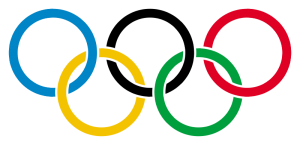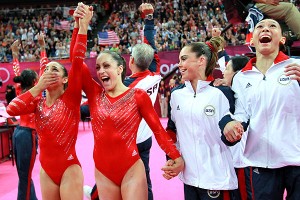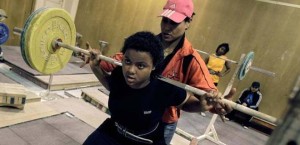If you're anything like me, you and your family are facing a post-Olympics letdown. I have the perfect solution. No, not starting to play any Olympic sports. As I wrote last week, I'm more of a reader than a athlete. I recommend you and your kids crack open the bindings of some of these recent books about competitive sports.

1) Swimming Studies by Leanne Shapton- This meditative, artistic work is the perfect book for the Internet/blog age. Shapton writes in snippets recalling her time as a national-caliber swimmer and how it shaped her. It is a type of memoir that reads a lot like a blog with moments vividly captured in words, and sometimes with the aid of paintings or photographs. I found Shapton's experience as a Canadian youth who was very, very good, but not great enough to make the Olympics (she went to the Olympic Trials several times), powerful. All of us likely feel this way about some aspect of our lives and Shapton's elegant turns of phrase and evocative sense of mood is quite appealing. Recommend for adults interested in memoir and good writing and for teens thinking of swimming more seriously, as this book shows that there is life after swimming for those who aren't Missy Franklin or Katie Ledecky.
2) Rush for the Gold: Mystery at the Olympics by John Feinstein- This may be surprising but this was the first YA "thriller" since the Hunger Games to actually keep my interest piqued until the end (especially since I read a lot of adult thrillers). Now, to be clear, this is no Harry Potter or Catching Fire, but this is an enjoyable book, part of the Last Shot series by sports journalist Feinstein. I haven't read any of the previous works in the series and there were clearly some characters whose significance was lost on me, but I enjoyed Feinstein's sense of pace and that the mystery didn't involve death or serious bodily harm (especially important for younger readers). The excellence of the main characters is at times unbelievable (they are national known high school-age sports writers, and the extremely beautiful one happens to make the Olympics in the butterfly-- think an alpha-ier Missy Franklin), but Feinstein's insider knowledge about swimming and journalism makes up for the less believable aspects of the story. While it obviously couldn't be 100% up-to-date, it does get many things right. While it ends a bit abruptly the story will appeal to male and female middle grade readers whether or not they are swimmers and athletes themselves.
3) Game Changers by Mike Lupica- Another middle grade series written by a sports journalist, Game Changers tackles a non-Olympic sport-- football. Lupica covers aspects of youth travel sports that many young readers will be familiar with, especially boys. I was less interested in the details of the football games played and more interested in the story, but I'm guessing that if I were a sixth grade boy I'd appreciate the accurate game descriptions. Lupica has written about competitive youth sports before, so if your little one likes this know there are more books where this came from.
4) Making Waves: A PrettyTOUGH Novel by Nicole Leigh Shepherd- While the Lupica books are directed more at male readers, the Pretty Tough series is directed at females. As their website explains they explore girls who are both fierce and feminine. I've read the first four books in the series, each of which focuses on a different sport (soccer, football, basketball, and softball) and the latest is from a new author in the series who focuses on the summer season of lifeguarding, complete with a scholarship competition at the end of the season. Characters are repeated throughout the series, so faithful readers will appreciate updates on their favorites, so if you haven't read the others you might have a bit of difficulty keeping all the characters straight. Middle grade girl readers will really love learning about the private lives of student athletes-- both at home with family, and with friends and romantic interests. Girls will enjoy the realistic situations that acknowledge how hard growing up in today's electronic and pressure-filled world can be, but parents can rest assured that the books tend to have a happy resolution when it comes to both athletics and romance.
I hope you and your young reader find that these books and authors tide over your Olympic enthusiasm until at least February 7, 2014 when the XXII Winter Games begin in Sochi!




